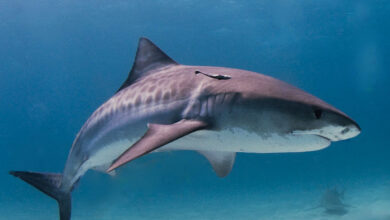Sharm al-Sheikh–Two different species of shark were involved in the recent spate of attacks off of Egypt’s Red Sea coast, according to a team of scientists currently studying the phenomenon. The team reportedly reached this conclusion based on “available data and eye witness reports of the attacks.”
South Sinai Governor Mohamed Abdel Fadil Shousha, for his part, said that an oceanic white-tip shark and a mako shark were both responsible for the attacks. At a Wednesday press conference, Shousha asserted that the mako shark in question had been caught. The white-tip, however, still remains at large, the governor added.
Teams of American and Egyptian scientists are continuing their investigation to determine the causal factors behind the recent wave of attacks. “What is certain is that some abnormality must have caused the attack,” said one Egyptian marine biologist involved in the investigation.
While team members stressed the inconclusive nature of their findings, they believe a host of natural and human causes lie behind the attacks. These include the illegal dumping of animal carcasses in nearby waters; unusually high water temperatures in Sharm al-Sheikh; depletion of natural prey populations caused by overfishing; and the practice of human fish feeding that sometimes includes feeding sharks.
The Ministry of Tourism on Wednesday extended restrictions on swimming and water sports in and around Sharm al-Sheikh until further notice. With the exception of an area between Northern Naema and Ras Nasrani, diving activity is restricted to experienced divers only.
“The 50 logged-dive limit, a recognized scuba benchmark, ensures that divers maintain good buoyancy and underwater control,” said Chamber for Diving and Water Sports Chairman Hesham Gabr. He stressed the chamber’s belief that it was now safe to allow diving since sharks behaved differently towards divers.
“In this respect, it’s noteworthy that none of those attacked were divers, despite many divers having seen the sharks first hand,” he said.
Meanwhile, holidaymakers coped with their limited beach options by heading to three designated swimming areas in Ras Mohammed and Naqb National Park.
Divers and experts are reportedly in the process of combing the seafloor to collect data in advance of the investigation’s diagnostic phase.




